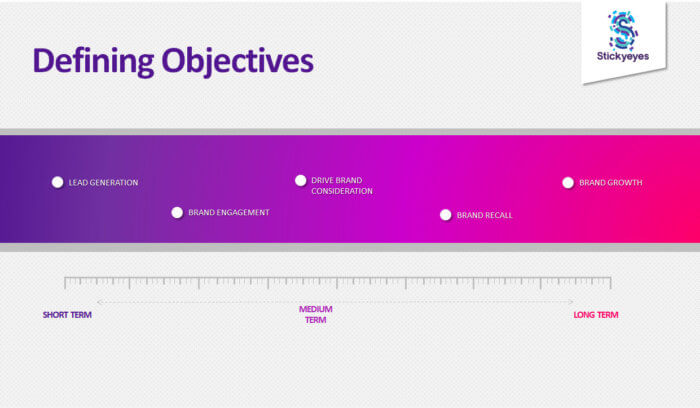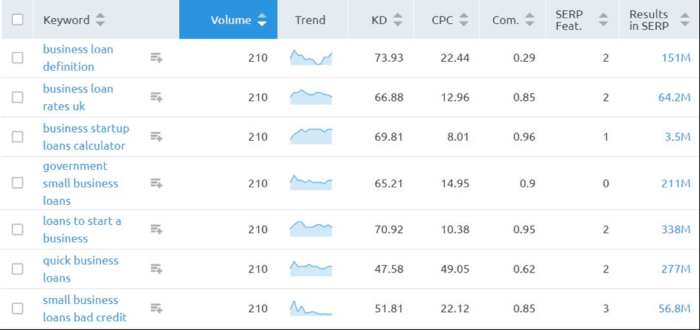Make sure your content connects when you’re working in niche industries
Content is king – even in niche markets. But when it comes to those industries where technical terminology, tight regulations, limited audiences and often uninspiring details are the realities of a marketer’s routine, creating that content can often seem an insurmountable challenge. Whilst the digital marketing conferences showcase outlandishly creative case studies from exciting FMCG brands, there you are, trying to sell that much less exciting thing that you are selling.
So how do we, as marketers in niche environments and complicated product areas, create the content that stands out from the crowd to engage our target audiences and, above all else, delivers that return on investment? What shape does our strategy need to take in order to prove the value of content marketing in niches where, in many cases, the freedom to create that content, the demand to receive it and the ability to disrupt our audiences with remarkable creative is somewhat lower?
Focus on that objective
The initial stage of the process is to understand precisely why you’re producing content in the first place, and to what end.
Much of the disillusionment we see with many B2B marketers are content marketers in those difficult, niche or regulated industries stemming from that belief that they can’t do that ‘exciting’ content marketing that often gets paraded at the award ceremonies or on the conference stages. There’s an almost entrenched belief that “you couldn’t make what we do exciting” and that “even if you could, Legal would never sign it off.” But that’s missing the point, for two reasons.

Firstly, marketing isn’t about making something exciting. It’s about making something purchasable. It’s about informing an audience what you can offer them, why they should trust what you are offering them and making it easy for them to buy it.
And secondly, because the objectives that you need to have to achieve that may be very different to those award-winning, discussion-generating case studies.
You probably have an audience that’s already relatively engaged and willing to listen to what you have to offer them – you don’t necessarily need to disrupt them with something outlandish and so ‘out there’ that it makes them stop and stare. Such a strategy is only ever going to have limited impact anyway in many such industries.
Instead, you simply need to find them at the right time and speak to them in their language.
It starts with knowing your audience
No matter how specialized the area you work in, even if it’s something most people haven’t heard of, you will have an audience out there somewhere. Through effective and engaging content, you can turn these interested parties into customers.
First-hand research is one of the best ways to understand not just who your audience is, but what they want to know. This is vital as it will shape the type of content you produce and help you find your tone of voice.
One key consideration is how expert your target audience is in their field. Creating content that’s too simplistic or advanced will be an instant turn off, but creating content that is too simplistic can potentially devalue your brand.
If you already have content assets that you have been using to engage audiences and nurture leads and prospects, your CRM data can be a good starting point to determine what is and isn’t working. What content are your most active followers, leads and customers engaging with? What is causing them to switch off from your brand message?
As you start to segment your audiences, you’ll find correlations in the content that engages them at different stages of the customer journey. Find the most valuable audience segments, understand the content that is (and isn’t) engaging them, and use that insight to influence your strategy.
Apply the same approach to your analytics data and speak to key stakeholders in your business. Account management and new business teams in particular, people who have face-to-face conversations with your prospects and your existing clients, can be especially influential as they understand the questions they’re asking.
What are your competitors talking about?
Even in emerging industries and niche sectors, there’s always going to be competition, but this doesn’t have to be a bad thing. In fact, you can use this competition to your advantage.
Look at your competitors to see how they are using content in their attempts to engage the audiences that you’re competing for. In most cases, there will be cases where they are doing things well, but there are also going to be areas where they leave a gap. This may be a gap that is left for good reason but it may also be one that you can exploit. Look at what seems to be working for them, take inspiration from it and use that to inform your own approach and strategy.
In some niches, finding a direct competitor may sometimes be a challenge, especially if your company offers something truly unique. In this case, it’s best to compare with businesses that overlap in some way, even if you share just one product or service.
Looking at larger competitors and what’s going on in the wider industry is important too. There will be general trends that apply to your specific audience, and lots of inspiration to boot – ideal if you plan to expand in the future.
The keywords that will generate inbound traffic and lead volume
Your content may be brilliant and engaging, but it still needs to be discoverable. Targeting the right keywords related to your industry is crucial in helping you achieve this.

The temptation is usually to target high volume keywords within your sector, especially when the numbers look quite low compared to more mainstream industries. However, this is where many niche brands fall down. The chances of ranking on page one for top-level terms against big, established names is often incredibly slim, at least at first.
Instead, conduct industry-specific keyword research around the content you’re producing. Even if the volume seems low, it’s worth targeting these phrases (along with long-tail keywords) as these provide an opportunity to rank for highly relevant terms. Your content probably won’t see a huge influx of traffic, but those who do discover it organically are more likely to be firmly within your target audience – and so they present a much higher chance of conversion. This is particularly important when, as we alluded to earlier, you are in an industry or product area where much of your traffic is likely to come from inbound sources – audiences actively looking for what you do because they understand the nature of the problem they have, or solution they’re looking for.
Industry-specific keyword research also gives you a clear insight into what your audience wants from your discoverable content. This is essential as a research tool, optimizing existing pieces, helping to inform your future planning and ensuring you’re always giving them the information they want.
Tone of voice and medium matters
This is another point that we alluded to earlier but getting the tone of voice right is extremely important. Go too technical or specific and you risk losing your audience. Go too far the other way and produce content that’s too simple, and you risk damaging the brand and product reputation.
You may already have brand guidelines that cover this, providing examples of what the ‘brand voice’ should be, and the terminology and tones that you should avoid. If you don’t have this, try and put something in place to ensure that you, and the team of content creators you’re working with, are singing from the same hymn sheet. All your content needs to follow the same, consistent style, which successfully engages your audience.
The medium in which you deliver that content also matters. Different audiences will be more receptive to content in different formats, so choose the most appropriate one for the message you are conveying, the audience you’re reaching and the purpose that content serves.
It’s also important to lean on the knowledge and experience of your experts. Whilst this is good practice from an accuracy perspective, bringing your experts to the fore can be extremely powerful in building credibility and positioning your brand as an expert in the field – something which is a key component behind the so-called Google EAT update.
Outreach effectively
Content doesn’t work if it doesn’t get seen. It sounds simple enough, but time and time again we see brands invest time, energy and expense into content, only to leave it in a dusty corner of the website.
Think about how your audiences are going to find the content you’ve created. Is it something that they’re likely to discover, or is it something that you need to actively promote? Discoverable content should be just that – discoverable. It’s unlikely that you’re going to achieve your ambitions by interrupting audiences with product-related content, so instead make it easy for search engines to find, understand and index the content for those audiences that are going to be actively looking for it.
If your content needs to be promoted, think about the audiences it needs to reach and where they are active to really maximize the impact of your outreach strategy.
For B2B brands, this could be using professional social networking platforms such as LinkedIn to promote content. You can share it with industry-specific community groups, targeted audience segments or even micro-influencers within your sector. You can also see direct audience feedback via comments and shares, giving a good indication of how engaging your content really is.
Final thoughts
Approaching industry publications can be hugely lucrative, as they already have the right audience in place for your business. It also adds extra credibility to your work, giving you official recognition by a renowned and trusted source.
CRM data can also be used to seek out effective outreach strategies. Information surrounding how your audience is marketed to and their responses provides valuable insight into what outreach methods are most effective. This can help you tailor where you promote your niche content for the best results.
Whatever niche industry you’re working in, creating engaging content that connects with your audience is possible – and vital for a successful campaign.
Graham Matthews is a senior content writer at
Stickyeyes with experience working on B2B content campaigns across the automotive, logistics, financial and other industries. You can connect with him on
LinkedIn.









